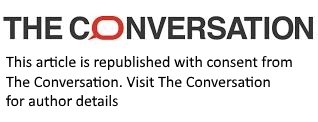A survey of Australian uni students suggests more than half are worried about food or don’t have enough to eat
- Written by Katherine Kent, Senior Lecturer in Nutrition and Dietetics, University of Wollongong

Being a university student has long been associated with eating instant noodles, taking advantage of pub meal deals and generally living frugally.
But for several years, researchers have been tracking how students are not getting enough food to eat. This can have an impact on their mental and physical health as well as their academic performance.
In new research, we look at how the problem is getting worse.
Our research
In March 2022 and March 2024, we surveyed University of Tasmania students about their access to food.
More than 1,200 students participated in the first survey and more than 1,600 participated in the second. Students were recruited through university-wide emails and social media and included both undergraduate and postgraduate students from a range of disciplines.
We used an internationally recognised survey to assess food insecurity. It can tell us whether students are struggling and to what extent.
It asked simple but revealing questions about financial barriers to food, such as “In the past 12 months, did you ever skip meals because there wasn’t enough money for food?” or “Did the food you bought just not last, and you didn’t have money to get more?”
Students were then classified as “food secure” or as one of three levels of food insecurity:
marginally food insecure: students were worried about running out of food
moderately food insecure: students were compromising on the quality and variety of food they ate
severely food insecure: students were often skipping meals or going without food altogether.
Regularly going without food
We found overall, food insecurity among students increased from 42% in 2022 to 53% in 2024.
The proportions of those experiencing marginal or moderate levels of food insecurity was stable (at about 8% and 17–18% respectively). But the number of students experiencing severe food insecurity jumped from 17% to 27%.
While food insecurity increased among most groups, younger students, those studying on campus and international students were the most at risk.
Although our study focused on the University of Tasmania, similar rates of food insecurity have recently been reported at other regional and metropolitan universities across the country. This suggests it is a widespread issue.
National data on food insecurity in the general Australian population is limited, with no regular government monitoring. The 2024 Foodbank Hunger Report estimates 32% of Australian households experienced food insecurity, including 19% with severe food insecurity.
Why is this happening?
While our study didn’t directly explore the causes of student hunger, rising inflation, high rents and limited student incomes are likely factors.
The surveys happened during a time of sustained inflation and rising living costs. We know rents, groceries and other essentials have all gone up. But student support payments have not kept pace over the study period.
What can we do?
To address food insecurity among students, coordinated action is needed across universities and state and territory governments.
Universities often run food pantries to provide students with basic supplies, but they also need more long-term supports for students.
Institutions could expand subsidised meal programs, offer regular free or subsidised grocery boxes and ensure healthy, low-cost food is consistently available on campus.
State governments can reduce the financial stress that contributes to food insecurity by expanding stipends and support for students on unpaid clinical placements in the state system. They could also expand public transport concessions to all students, including international students.
The federal government can raise Youth Allowance and Austudy to reflect real living costs. The new Commonwealth Prac Payment could be expanded beyond teaching, nursing, midwifery and social work to cover all students undertaking mandatory unpaid placements. The government’s plan to raise HECS-HELP repayment thresholds could also ease the financial pressure on recent graduates.
Authors: Katherine Kent, Senior Lecturer in Nutrition and Dietetics, University of Wollongong





